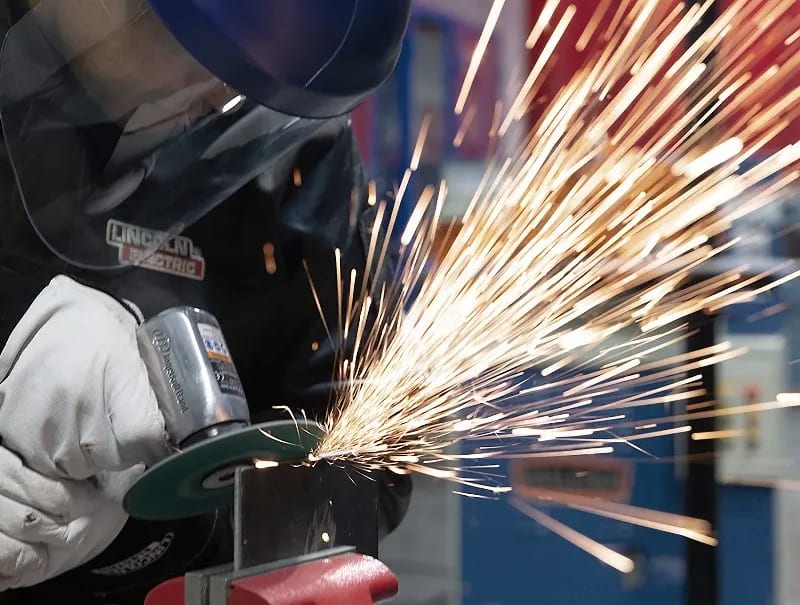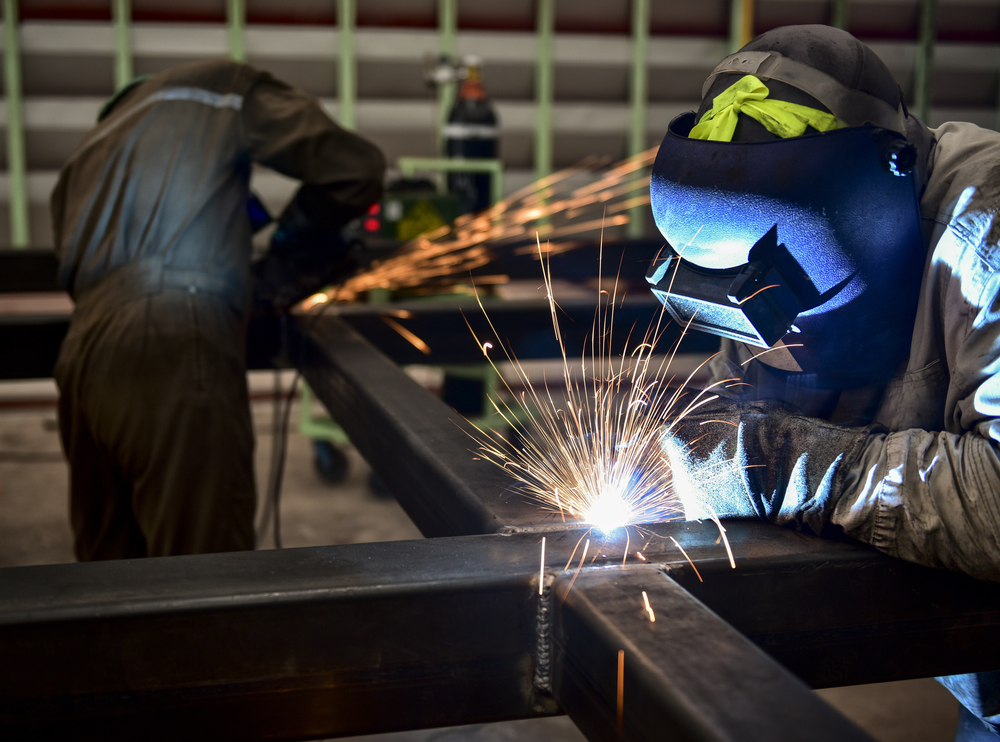Everything about Welding: Secret Insights Into Techniques and Best Practices for Success
Welding incorporates a variety of methods, each suited for specific materials and applications. Understanding these techniques, such as GMAW, SMAW, and TIG, is necessary for achieving excellent results. Furthermore, the appropriate equipment and security techniques can not be neglected. As prep work and troubleshooting play essential functions in the welding procedure, understanding these components can greatly improve the high quality of the end product. What are the essential factors that ensure a successful weld?
Recognizing Various Welding Techniques
Welding methods incorporate a range of techniques, each fit to particular applications and products. Among one of the most typical methods are Gas Metal Arc Welding (GMAW), Secured Steel Arc Welding (SMAW), and Tungsten Inert Gas Welding (TIG) GMAW, also called MIG welding, is preferred for its rate and versatility, making it excellent for slim materials. SMAW, or stick welding, is favored for its simplicity and efficiency in outdoor settings, specifically with thicker metals. TIG welding provides precision and control, making it suitable for complex job and non-ferrous steels (Montana Mobile Welding and Repair Belgrade Welding). Each strategy has its unique advantages and considerations, allowing welders to select the best method based upon the task's needs, material kind, and preferred outcomes. Comprehending these strategies is necessary for effective welding
Important Welding Devices and Tools
While numerous welding strategies need certain abilities, the best equipment and tools are just as vital for accomplishing top quality results. Essential welding devices includes welding devices, which differ depending on the strategy-- such as MIG, TIG, or stick welding. Protective equipment, including headgears, gloves, and aprons, guarantees safety and security and convenience during the process. Additionally, clamps and components help safeguard materials in location, ensuring precision in welds. Consumables like welding rods, cord, and shielding gas are likewise essential parts that influence the high quality of the weld. Additionally, tools such as grinders and cutters facilitate surface prep work and post-weld completing, adding to a professional end result. Buying top quality devices inevitably enhances the performance and effectiveness of welding jobs.
Security Practices in Welding
Appropriate safety and security practices are necessary in the welding sector to protect employees from potential threats. Welders should put on appropriate personal safety equipment (PPE), including helmets with proper shading, handwear covers, and flame-resistant apparel. Sufficient ventilation is crucial to minimize direct exposure to unsafe fumes and gases created during the welding process. Furthermore, workers ought to be educated in the appropriate handling of welding devices to avoid mishaps. Fire precaution, such as keeping flammable materials away from the welding area and having fire extinguishers readily offered, are required. Routine evaluations of equipment and workspaces can help recognize prospective hazards prior to they cause mishaps. By sticking to these security methods, welders can create a safer working atmosphere and lessen risks connected with their trade.
Readying Materials for Welding
Preparing products for welding is an essential action that substantially influences the high quality and stability of the end product (Belgrade). Appropriate preparation includes cleaning the surfaces to get rid of impurities such as oil, dust, and corrosion, which can compromise the weld. Strategies such as grinding, sanding, or utilizing solvents are commonly employed to attain a tidy surface. In addition, making sure that the products mesh well is important; spaces can result in weak welds. It's additionally essential to consider the positioning and positioning of the components, as this will affect the simplicity of welding and the final end result. Lastly, picking the suitable filler product and ensuring compatibility with the base metals is necessary for attaining strong, sturdy welds
Tips for Achieving High-Quality Welds
Achieving high-quality welds needs attention to detail and adherence to finest methods throughout the welding procedure. Appropriate joint preparation is important, making sure surfaces are tidy and complimentary from pollutants. Picking the proper filler material and welding method based upon the base metals is crucial for ideal bonding. Maintaining regular travel rate and angle while welding can promote and avoid defects harmony. In addition, managing heat input is essential; too much warm can lead to bending and compromised joints. If necessary, regularly evaluating the welds throughout the process enables for prompt adjustments. Employing appropriate post-weld therapies, such as cleansing and tension relief, can boost the toughness and integrity of the weld, ultimately making certain a successful end result.
Troubleshooting Typical Welding Issues
Welding commonly presents challenges that can impact the top quality and integrity of the final product. Usual concerns such as porosity, irregular weld beads, and overheating can develop, each needing certain fixing strategies. Comprehending these issues is important for welders to boost their abilities and attain excellent results.
Porosity Problems Clarified
Although porosity can often be forgotten, it stays a critical concern in welding that can endanger the stability of a finished product. Porosity refers to the presence of tiny gas pockets within the weld bead, which can compromise the joint and lead to premature failing. This problem commonly arises from impurities, wetness, or improper securing gas coverage throughout the welding process. To alleviate porosity, welders must confirm that the base materials are clean and completely dry, use ideal securing gases, and preserve constant welding parameters. Frequently examining the tools and setting can likewise assist determine prospective issues prior to they materialize read more in the weld. Resolving porosity successfully is important for achieving solid, long lasting welds that satisfy quality standards.

Irregular Weld Beads
Irregular weld grains can considerably impact the high quality and strength of an ended up item. Various elements add to this concern, consisting of inappropriate traveling rate, inaccurate amperage settings, and inconsistent electrode angles. When the welder relocates as well quickly, a grain may appear slim and do not have infiltration, while moving too gradually can create too much accumulation. In addition, using the incorrect amperage can cause either damaging or excessive spatter, both of which concession weld stability. The welder's strategy, such as inconsistent lantern activity, can likewise cause irregular grain look. To minimize these troubles, welders must concentrate on maintaining consistent, controlled movements and making certain proper tools settings to attain harmony in their welds. Consistency is key to attaining strong and reliable welds.
Overheating and Bending Issues
Too much heat throughout the welding process can bring about substantial overheating and warping problems, impacting the structural integrity of the workpiece. These issues usually manifest as distortion, which can endanger placement and fit-up, making additional setting up challenging. Factors adding to overheating consist of the selection of welding criteria, such as voltage and take a trip rate, along with the sort of product being welded. To minimize these problems, welders need to maintain consistent traveling rate and ideal warm input while monitoring the work surface temperature level. Additionally, preheating or post-weld heat therapy can aid relieve tensions caused by quick cooling - Welding. Normal assessment and adherence to ideal methods are crucial in preventing getting too hot and guaranteeing the durability and integrity of welded structures
Often Asked Concerns
What Are the Profession Opportunities in the Welding Market?
The welding industry uses diverse occupation chances, including placements as welders, engineers, examiners, and teachers. Specialists can operate in production, building, aerospace, and automotive fields, benefiting from strong need and affordable incomes in different roles.
Just How Can I Boost My Welding Rate Without Giving Up Quality?
To boost welding rate without sacrificing high quality, one need to practice reliable techniques, preserve equipment, maximize setups, and improve hand-eye control. Regular training and looking for comments can additionally considerably contribute to attaining faster, high-grade welds.
What Qualifications Are Available for Welders?
Various qualifications exist for welders, consisting of those from the American Welding Culture (AWS), the National Facility for Building Education And Learning and Study (NCCER), and different industry-specific organizations. These qualifications improve employability and demonstrate skill effectiveness.
How Does Welding Affect the Features of Metals?
Welding influences the buildings of metals by changing their microstructure, which can bring about modifications in stamina, solidity, and ductility. Warmth input and cooling rates throughout the process substantially affect these product qualities.
Can I Weld Dissimilar Metals With Each Other?
